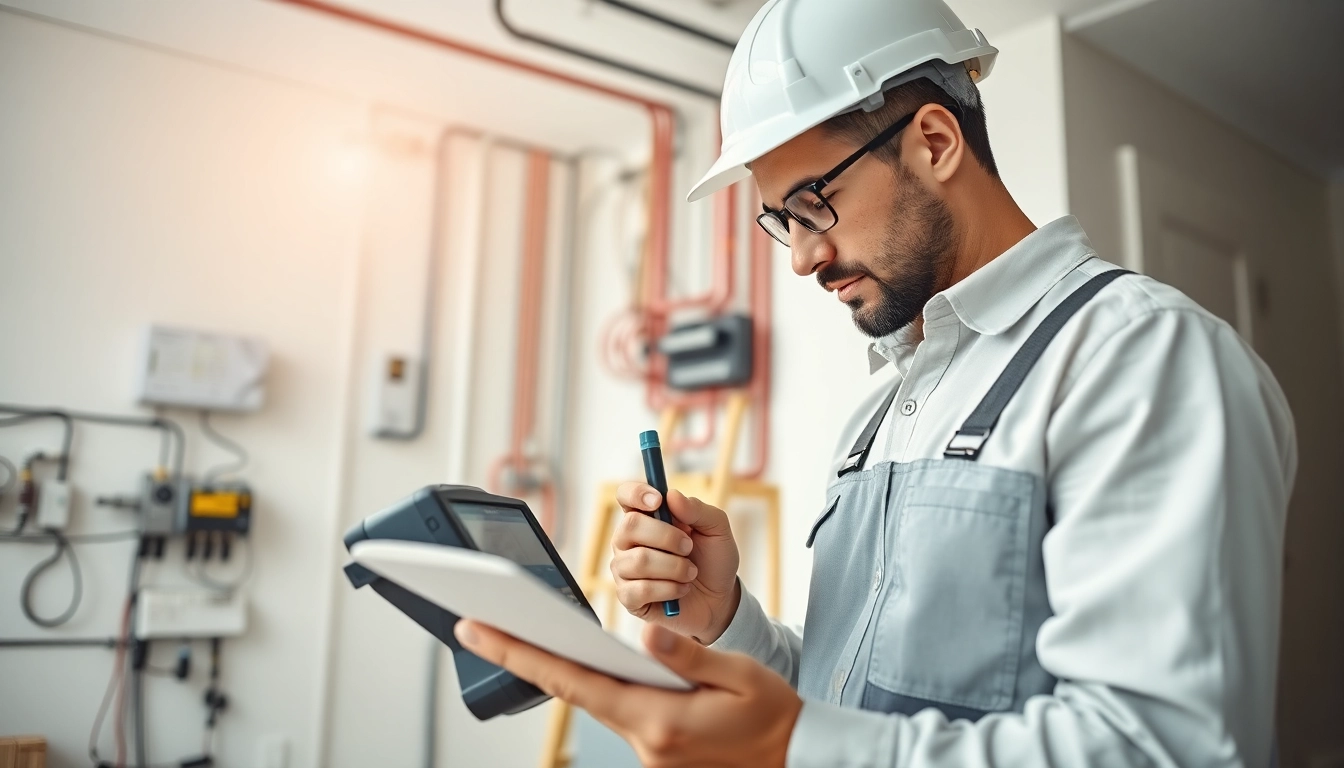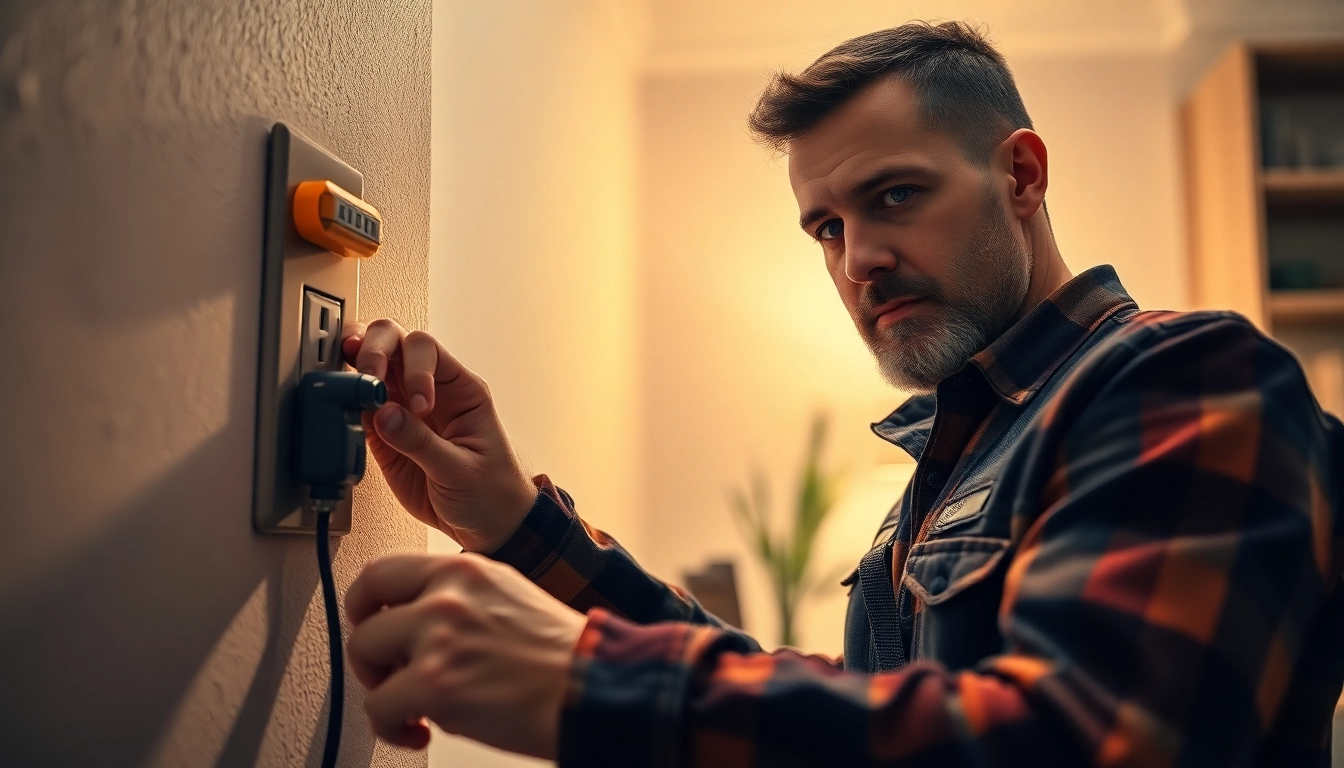What Are EICR Inspections?
Defining Electrical Installation Condition Reports
An Electrical Installation Condition Report (EICR) is a formal document detailing the condition of electrical installations in a property. The report is generated after a thorough inspection, which assesses whether the electrical system is safe to use and compliant with the relevant regulations. The EICR informs property owners, landlords, and managers about the usability and safety of their electrical installations, ensuring that they are fit for purpose and can mitigate risks associated with faulty electrical systems. Essentially, EICR inspections are critical to maintaining safety standards in residential and commercial properties alike. For more detailed insights, explore EICR Inspections.
The Importance of EICR Inspections for Property Owners
EICR inspections play an indispensable role for property owners. Firstly, they ensure compliance with legal obligations regarding electrical safety standards, which are increasingly scrutinized by regulatory bodies. This is particularly vital for landlords, who must provide a safe living environment for tenants under the law. Furthermore, EICRs provide peace of mind, affirming that systems are operating correctly and reducing the risk of electrical failures that could lead to accidents or fires. Regular inspections can also contribute to lowering insurance premiums and can enhance property value by demonstrating a commitment to safety.
Common Standards and Regulations
The standards that govern EICR inspections often vary by location but are generally derived from the UK’s IET Wiring Regulations (BS 7671) or the National Electrical Code (NEC) in the US. In the UK, the document must follow the specific guideline laid out in the Health and Safety at Work etc. Act 1974, the Electrical Equipment (Safety) Regulations 2016, and the Electricity at Work Regulations 1989. It is important to familiarize yourself with these standards to ensure that you are compliant with the specific requirements relevant to your property and local jurisdiction.
The EICR Inspection Process
Step-by-Step Guide to Conducting an EICR
The EICR inspection process is meticulous and involves several key steps:
- Preparation: Gather all relevant documentation including previous EICRs, installation manuals, and certificates.
- Visual Inspection: Inspectors will first conduct a walkthrough to visually assess the condition of electrical installations, looking for obvious signs of damage or wear.
- Testing: Comprehensive testing of circuits and electrical systems using specialized equipment helps identify potential issues. This includes testing for earth faults, insulation resistance, and continuity.
- Assessment: Each element is assessed against current regulations and standards to determine its safety and functionality.
- Reporting: Findings, including observations and recommendations for corrective actions, are compiled into the EICR report.
Essential Tools and Equipment Used in EICR Inspections
Inspectors utilize a variety of tools and equipment to conduct thorough EICRs:
- Multimeter: For checking voltage, current, and resistance.
- Earth Fault Loop Impedance Tester: To measure the earth fault loop impedance levels.
- Insulation Resistance Tester: For assessing insulation resistance at various points in the installation.
- Pat Tester: For testing portable appliance safety.
- Thermal Imaging Camera: To detect hotspots in the electrical system that may indicate failures.
What Inspectors Look For During EICR Inspections
During an EICR, inspectors are trained to look for common issues including:
- Excessive wear and tear on wiring and fittings.
- Improper earthing and bonding.
- Overloaded circuits and safety devices.
- Poorly labeled or unmarked fuse boxes.
- Compliance with current wiring regulations.
Their findings will determine the safety rating of the electrical installation, which can range from “satisfactory” to “unsatisfactory.” Any observed deficiencies must be addressed promptly to mitigate potential hazards.
Legal Requirements and Compliance for EICR Inspections
Understanding the Legal Obligations for Landlords
In many jurisdictions, legal requirements regarding EICR inspections are explicit. For instance, in the UK, the law mandates that landlords must have an EICR carried out every five years for their rental properties. Failure to comply with these regulations can lead to substantial fines or even criminal charges. Landlords must also ensure that any necessary remedial work is completed within a specific timeframe to maintain compliance.
Frequency of EICR Inspections Based on Property Types
The frequency of EICR inspections can depend on several factors, including the type of property and its usage:
- Domestic Properties: Generally inspected every five years or when there is a change of occupancy.
- Commercial Properties: Often required to have inspections every one to three years, depending on the nature of the business and the equipment used.
- High-Risk Environments: Locations such as construction sites may require more frequent checks due to increased risks associated with electricity.
Consequences of Non-Compliance with EICR Regulations
Neglecting EICR regulations can lead to severe consequences for property owners, including:
- Legal Penalties: Fines and potential legal action from regulatory bodies.
- Increased Insurance Costs: Insurers may raise premiums or refuse coverage in the event of accidents linked to non-compliance.
- Increased Risk: Higher chances of electrical faults, leading to fires or other dangerous incidents.
Thus, fulfilling these legal obligations is not only a regulatory requirement but crucial for ensuring safety.
Maintaining Electrical Safety Post-EICR Inspection
Addressing Findings from EICR Reports
Upon receiving an EICR report, it is imperative to address any findings classified as unsatisfactory. Property owners should:
- Immediately consult with a qualified electrician to prioritize necessary repairs.
- Document all corrective actions taken to ensure future compliance.
- Monitor any ongoing electrical issues that may not have been evident during the inspection.
Taking these proactive steps not only enhances safety but ensures compliance with legal and insurance requirements.
Best Practices for Ongoing Electrical Safety
To maintain ongoing electrical safety, property owners are encouraged to adhere to the following best practices:
- Schedule regular inspections and maintain records of all EICRs.
- Educate tenants or employees on safe electrical practices.
- Establish a protocol for reporting electrical concerns, ensuring prompt attention to potential issues.
- Keep up with electrical safety regulations and standards through industry publications or professional associations.
Implementing these best practices ensures not only compliance but a safer environment overall.
Resources for Property Owners on Electrical Safety
Property owners seeking more information on electrical safety and EICR inspections can refer to various resources:
- Electrical Safety First – Offers comprehensive guidance, tips, and updates on electrical safety regulations.
- Napit – Provides resources specifically aimed at the electrical contracting industry.
- Electrical Safety Council – Focuses on safety issues relating to electrical installations and provides educational materials.
Frequently Asked Questions about EICR Inspections
How Long is an EICR Certificate Valid?
The validity of an EICR certificate typically depends on the property type and applicable regulations. For residential properties, an EICR is usually valid for five years, while commercial properties may require shorter intervals between inspections based on their specific use and risks involved. Failure to conduct regular inspections can render the certificate void.
What to Expect During an EICR Inspection?
When undergoing an EICR inspection, property owners can expect a thorough examination of their electrical systems. Inspectors will assess circuit integrity, verify proper connections, and test systems for compliance with safety regulations. A detailed report will be provided at the end of the inspection, outlining the findings and necessary actions if any issues are discovered.
How to Select a Qualified Inspector for EICR Inspections?
Choosing a qualified inspector is crucial for a reliable EICR. Property owners should:
- Verify credentials and ensure the inspector holds relevant qualifications, such as being a member of a recognized regulatory body.
- Request testimonials or references from previous clients to gauge their reliability.
- Inquire about their experience, particularly in the specific property type being inspected.
Taking these steps can help ensure that the EICR inspection is thorough, accurate, and compliant with regulations.



